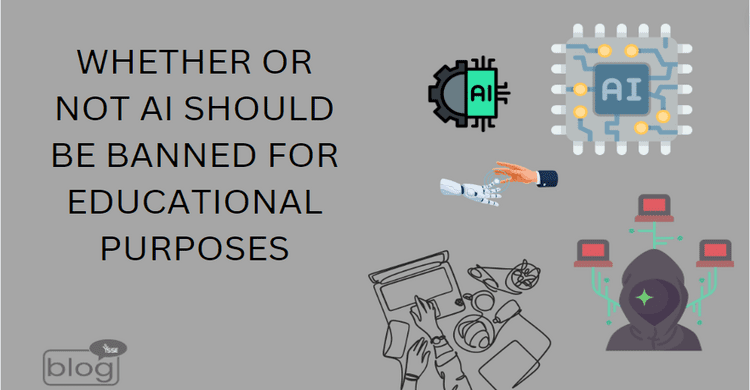The article discusses the ongoing debate on whether artificial intelligence (AI) tools, specifically ChatGPT, should be banned for educational purposes. The New York City Department of Education has already banned ChatGPT, citing negative impacts on students and concerns about privacy, plagiarism, and the potential for generating harmful content. The article explores both the advantages and drawbacks of using AI tools in education.
Benefits of AI in Education:
- Personalized Learning:AI tools can provide customized learning experiences for students, catering to different learning styles and speeds.
- Efficiency and Convenience: AI tools assist students in organizing and managing their work efficiently, offering the flexibility to learn anytime and anywhere.
- Improved Engagement and Collaboration: Online tools facilitate collaboration between students and teachers, allowing remote connections and engagement.
- Instant Feedback:AI can provide instant feedback on assignments and quizzes, helping students identify areas for improvement.
Drawbacks and Concerns:
- Privacy Concerns: AI tools collect personal information, raising concerns about privacy and the potential for misuse of student data.
- Over-Reliance on Tools: Some students may excessively depend on AI tools, impacting critical thinking and problem-solving skills.
- Inequality in Access: Students from underserved communities may lack access to online tools, creating educational disparities.
- Plagiarism Risks: AI tools can make plagiarism easier, as students may misuse them to cheat on assignments.
- Reduced Human Interaction: Excessive reliance on AI may diminish face-to-face interactions with teachers and peers, affecting social development.
- Loss of Traditional Teaching:Rapid adoption of AI could lead to neglecting traditional teaching methods, potentially affecting the overall learning experience.
- Depersonalized Learning: While AI can offer personalized learning, some argue that it may depersonalize education, lacking the irreplaceable human touch.
Government Actions:
Governments are contemplating whether to ban AI tools for learning. While there are concerns, a complete ban might not be the best solution, as people can find ways to use these tools outside regulated environments.
Current Responses in Schools:
Schools are taking varied approaches, with some banning, some integrating, and others reviewing the use of generative AI like ChatGPT. The article highlights examples of districts banning ChatGPT due to concerns about academic integrity and child safety.
Colleges and universities are largely leaving decisions on generative AI to faculty, while school districts are taking institutional action. Districts are either banning, integrating, or reviewing the use of AI, with efforts to address the challenges and opportunities it presents.
Proposed Strategies:
Instead of a complete ban, regulating AI to protect privacy, ensure fairness, and promote responsible use. The focus should be on harnessing the benefits of AI while addressing its challenges.
There are several strategies for schools to approach generative AI governance, including establishing guiding principles, providing training resources for teachers, empowering educators to implement principles, and assisting overburdened districts.
There are five alternative solutions to the AI in education dilemma, including elevated expectations, handwritten assignments, thesis defense documents, creative assignments, and maintaining the status quo.
Thus there is a need for school districts to adapt to the use of generative AI, setting guiding principles, providing training, empowering educators, and supporting districts facing challenges. It underscores the importance of preparing students for the future while addressing the concerns associated with AI in education.
To read more blogs, click here.
Writer
Sumaiya Islam Sonali
Intern
Content Writing Department, YSSE

